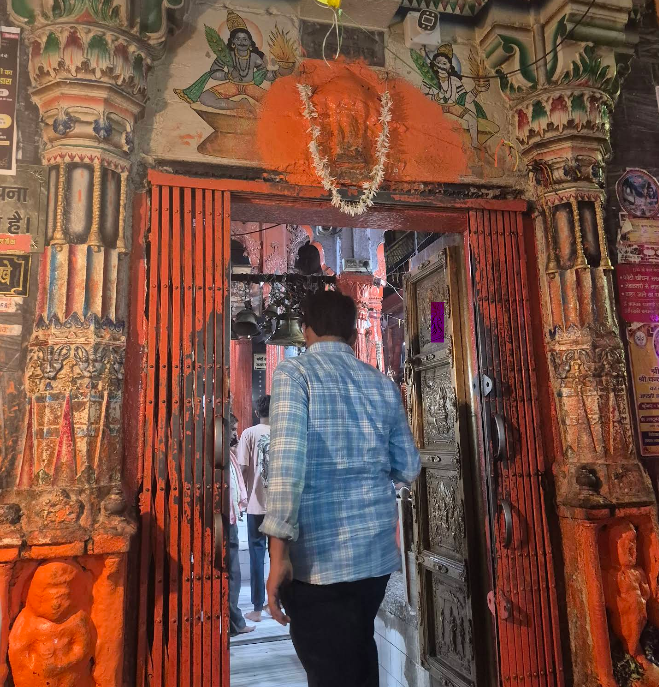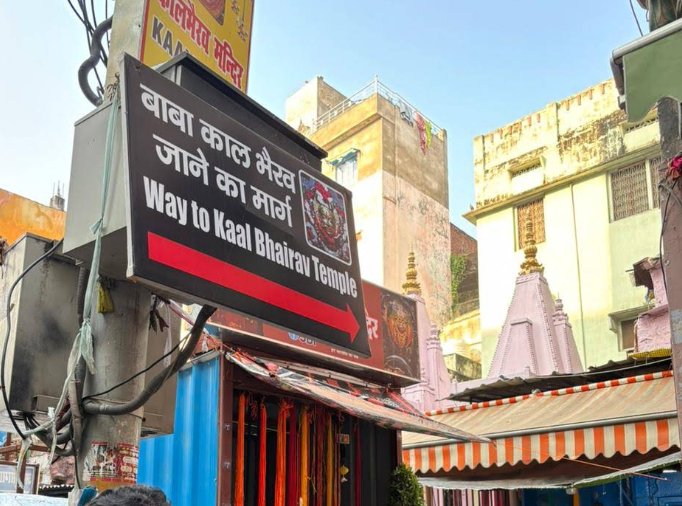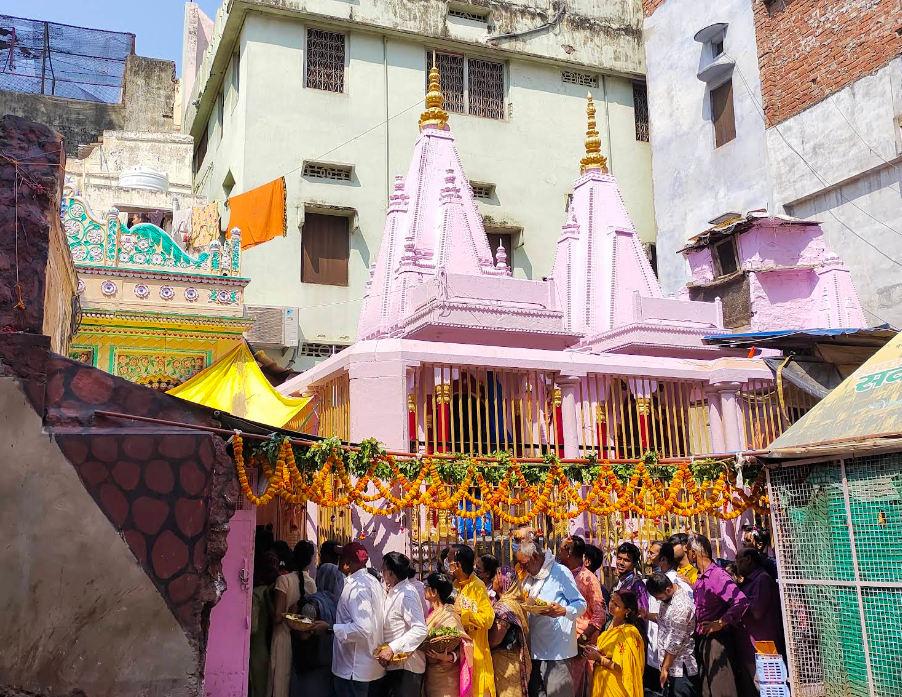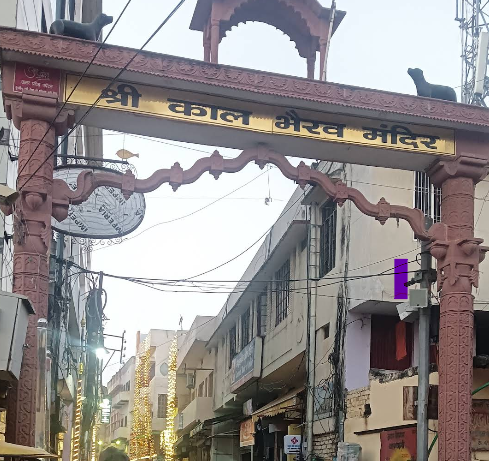Kaal Bhairav Temple - the guardian of Kashi Varanasi
🖼️ Photo Gallery




🛕 Temple Info
To seek the audience of the Kotwal, the guardian of Kashi, one must journey into the very heart of the ancient city. Leaving the main thoroughfares behind, you navigate a labyrinth of narrow, pulsating lanes, where the air is thick with the scent of flowers, incense, and devotion. The approach to the Shri Kaal Bhairav Temple is an experience in itself, a passage through the raw, unfiltered life of Varanasi. The temple entrance is modest, yet the energy that emanates from within is anything but. As you step across the threshold, you are met with an intense, palpable spiritual force—a feeling that is both fierce and profoundly peaceful.
Inside, the atmosphere is charged with devotion. The constant ringing of bells, the resonant chants of "Om Kaal Bhairavaya Namah," and the focused silence of countless devotees create a symphony of sacred energy. The main sanctum houses the powerful, silver-faced idol of Lord Kaal Bhairav, seated on his vahana, the dog. Adorned with garlands and often covered with a black cloth, only his majestic face is visible to devotees through the doorway. His gaze is transformative, instilling not fear, but a deep sense of protection and the removal of all worldly anxieties. The temple complex, though small and often crowded, is a vortex of faith where pilgrims, sadhus, and locals converge, all seeking the blessings of the one who holds the keys to the city.
💫 Importance
In the spiritual hierarchy of Varanasi, if Lord Vishwanath is the King, then Shri Kaal Bhairav is his Kotwal—the chief guardian and protector. It is a deeply held belief that no one can reside in or even enter Kashi without his implicit permission and blessings. This makes a visit to his temple the essential first step for any pilgrim. Your journey to the Kashi Vishwanath Temple is considered incomplete without first paying your respects here.
Lord Kaal Bhairav is a fierce manifestation of Lord Shiva, and his name holds profound meaning. "Kaal" signifies both "Time" and "Death," and he is revered as the one who removes the fear of both. He is the divine judge and protector, believed to safeguard his devotees from negative forces, evil influences, and all forms of harm. He vanquishes inner demons like greed, anger, and desire, granting spiritual strength and clarity. A unique and defining ritual of this temple is the offering of liquor (madira) to the deity, symbolizing a devotee's complete surrender, acknowledging that the divine consumes all aspects of worldly existence.
📜 History
The current temple structure is historically significant, believed to have been rebuilt in the 17th century, with many sources pointing to 1715 AD by the Maratha Peshwa Bajirao. Its architecture follows the ancient Nagara style, characteristic of North Indian temples. However, the temple's spiritual origins are rooted in timeless Hindu mythology.
One central legend narrates that Lord Kaal Bhairav was created from Shiva's rage to decapitate one of Lord Brahma's five heads, which had become steeped in arrogance. As a result, Brahma's skull stuck to Bhairav's hand, and he was cursed to wander as a penitent. This sin of "Brahma Hatya" followed him until he reached the sacred grounds of Kashi. The moment he entered the city, the skull fell from his hand, and he was liberated from his burden. Lord Shiva then commanded him to remain in Varanasi forever as its eternal guardian, the Kotwal, protecting the city and its devotees for all time.
🪔 Pooja Timings
The temple follows a strict schedule, allowing devotees to seek darshan throughout the day.
- Morning: 5:00 AM to 1:30 PM
- Evening: 4:30 PM to 9:30 PM
The temple is known for its powerful Aarti ceremonies. Key Aartis include the Mangala Aarti at 4:00 AM, the Bhog Aarti around noon, the Sandhya Aarti in the evening (around 7:00 PM), and the deeply mystical Shayan Aarti late at night (around 11:00 PM). Sundays and Tuesdays are considered especially auspicious days for worship and attract larger crowds.
🚌 Transport Options
- By Air: The nearest airport is Lal Bahadur Shastri International Airport in Varanasi, located in Babatpur. It is approximately 25-30 km from the city center. From the airport, taxis and auto-rickshaws are readily available to take you to the Vishwesharganj or Chowk area, from where you will need to walk through the narrow lanes to the temple.
- By Rail: Varanasi Junction (BSB) is the main railway station, situated about 5 km from the temple. It is a major hub well-connected to all corners of India. From the station, you can hire a taxi, auto-rickshaw, or cycle-rickshaw to reach the general vicinity of the temple.
- By Road: Varanasi has excellent road links to other cities in Uttar Pradesh and neighboring states. The temple is located in the historic Vishwesharganj area, near the Kashi Vishwanath Temple. Once in the area, the final approach to the Kaal Bhairav Temple is only accessible on foot through the characteristic narrow galis (lanes).
🏙️ Nearby Cities
- Prayagraj: ~125 km
- Ayodhya: ~200 km
- Gorakhpur: ~230 km
- Lucknow: ~285 km
MytempleMypride Reflection